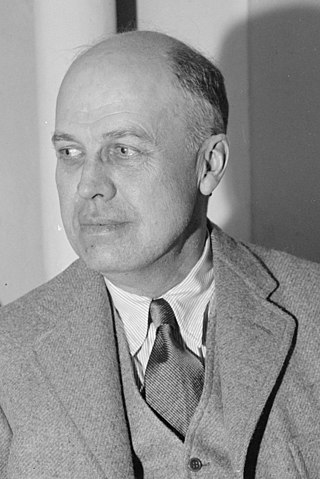
Edward Hopper was an American realist painter and printmaker. He is one of America's most renowned artists and known for his skill in capturing American life and landscapes through his art.
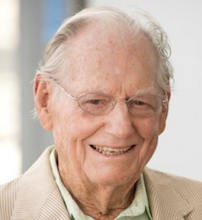
Morton Wayne Thiebaud was an American painter known for his colorful works depicting commonplace objects—pies, lipsticks, paint cans, ice cream cones, pastries, and hot dogs—as well as for his landscapes and figure paintings. Thiebaud is associated with the pop art movement because of his interest in objects of mass culture, although his early works, executed during the fifties and sixties, slightly predate the works of the classic pop artists. Thiebaud used heavy pigment and exaggerated colors to depict his subjects, and the well-defined shadows characteristic of advertisements were almost always included in his work.

The Ashcan School, also called the Ash Can School, was an artistic movement in the United States during the late 19th-early 20th century that produced works portraying scenes of daily life in New York, often in the city's poorer neighborhoods.
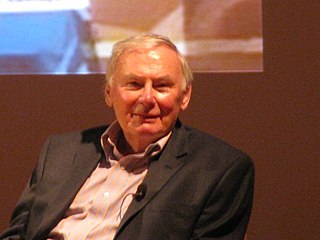
Richard Estes is an American artist, best known for his photorealist paintings. The paintings generally consist of reflective, clean, and inanimate city and geometric landscapes. He is regarded as one of the founders of the international photo-realist movement of the late 1960s, with such painters as John Baeder, Chuck Close, Robert Cottingham, Audrey Flack, Ralph Goings, and Duane Hanson. Author Graham Thompson writes "One demonstration of the way photography became assimilated into the art world is the success of photorealist painting in the late 1960s and early 1970s. It is also called super-realism or hyper-realism and painters like Richard Estes, Denis Peterson, Audrey Flack, and Chuck Close often worked from photographic stills to create paintings that appeared to be photographs."

Kenyon Cox was an American painter, illustrator, muralist, writer, and teacher. Cox was an influential and important early instructor at the Art Students League of New York. He was the designer of the League's logo, whose motto is Nulla Dies Sine Linea or No Day Without a Line.

Everett Shinn was an American painter and member of the urban realist Ashcan School.
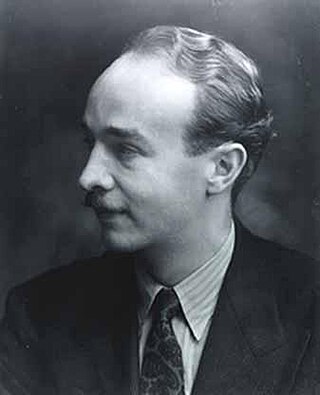
John Koch, was an American painter and teacher, and an important figure in 20th century Realism. He is best known for his light-filled paintings of urban interiors, often featuring classical allusions, many set in his own Manhattan apartment.
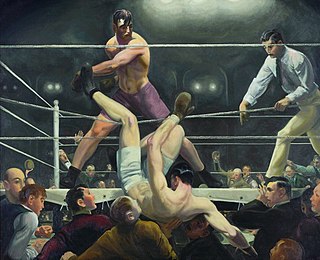
American Realism was a movement in art, music and literature that depicted contemporary social realities and the lives and everyday activities of ordinary people. The movement began in literature in the mid-19th century, and became an important tendency in visual art in the early 20th century. Whether a cultural portrayal or a scenic view of downtown New York City, American realist works attempted to define what was real.
Lowell Blair Nesbitt was an American painter, draughtsman, printmaker, and sculptor. He served as the official artist for the NASA Apollo 9, and Apollo 13 space missions; in 1976 the United States Navy commissioned him to paint a mural in the administration building on Treasure Island spanning 26 feet x 251 feet, then the largest mural in the United States; and in 1980 the United States Postal Service honored Lowell Nesbitt by issuing four postage stamps depicting his paintings.

Bikash Bhattacharjee was an Indian painter from Kolkata in West Bengal. Through his paintings, he depicted the life of the average middle-class Bengali – their aspirations, superstitions, hypocrisy and corruption, and even the violence that is endemic to Kolkata. He worked in oils, acrylics, water-colours, conté and collage. In 2003, he was awarded the highest award of Lalit Kala Akademi, India's National Academy of Arts, the Lalit Kala Akademi Fellowship.

Gus Heinze is an American photorealist painter.
The Terrain Gallery, or the Terrain, is an art gallery and educational center at 141 Greene Street in SoHo, Manhattan, New York City. It was founded in 1955 with a philosophic basis: the ideas of Aesthetic Realism and the Siegel Theory of Opposites, developed by American poet and educator Eli Siegel. Its motto is a statement by Siegel: "In reality opposites are one; art shows this."

Chaim Koppelman was an American artist, art educator, and Aesthetic Realism consultant. Best known as a printmaker, he also produced sculpture, paintings, and drawings. A member of the National Academy of Design since 1978, he was president of the Society of American Graphic Artists (SAGA), which presented him with a Lifetime Achievement Award in 2004. He established the Printmaking Department of the School of Visual Arts in 1959, and taught there until 2007.
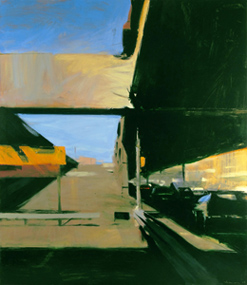
Ben Aronson is an American painter living in Massachusetts. His work is represented by Tibor de Nagy Gallery in New York, Jenkins Johnson Gallery in San Francisco, LewAllen Galleries in Santa Fe, and Alpha Gallery in Boston.
James Havard was an American painter and sculptor. He was a pioneer of abstract illusionism in the 1970s. In the 1980s he changed his style into a form of abstract expressionism influenced by Native American and tribal cultures as well as outsider art. Drawing inspiration from outsider and tribal art, Havard stands within a tradition that includes such notable artists as Paul Gauguin, Cy Twombly, Jean Dubuffet, Jean-Michel Basquiat, and Joseph Beuys.
Cecile Gray Bazelon was an American painter living in New York City. Bazelon was best known for her perspectives of unpeopled New York cityscapes, and her depictions of interior spaces framed in geometric patterns.
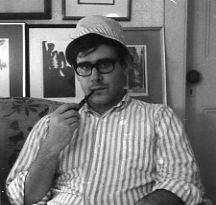
Carroll Nathaniel Jones III was an artist in the style of American realism. Carroll grew up in New Providence, New Jersey, where his father, an illustrator for Life (magazine), was his first art teacher. He taught Carroll techniques of the Old Masters, who emphasized light, perspective, and composition. Carroll went to school in New York City (NYC) and enrolled in the Phoenix School of Design at age 17. He later attended Hartford Art School and became a commissioned portraitist for 10 years. After his work, Church Window was recognized in the New York Times, he moved away from portraits to recreate scenes that sparked memories of his childhood. Andrew Wyeth and Edward Hopper most influenced Jones. The Coe-Kerr Gallery of NYC and Whistler's Daughter Gallery of New Jersey represented Jones and contemporaries, Wyeth and Hopper. Malcolm Forbes, Frederick R. Koch, Stephen Sondheim, William Schuman, and Jean Shepherd held private collections. He exhibited at Newark Museum and Trenton Art Museum in New Jersey, and in universities, galleries and museums in seven states by his mid-thirties. His work is part of the permanent collections of Seton Hall University and Newark Museum. Art critic Marion Filler considered his work Magic realism, a quiet movement made famous in America beginning in the 1920s by Hopper, and related to Surrealism.
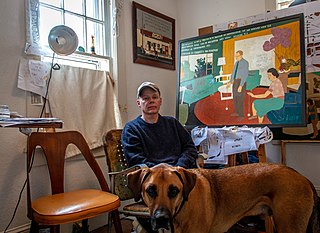
Harry Underwood is an American painter known for his use of stenciled images and literary elements executed on wood panels. His pictures are painted with house paint and written with No. 2 pencils. His subjects are an eclectic mix of realism, surrealism, pop art and invention.

John Opper (1908–1994) was an American painter who transitioned from semi-abstract paintings in the late 1930s to fully abstract ones in the 1950s. He became known for his handling of color and in particular his ability to create dramatic intensity on the picture plane by means of juxtaposed, more-or-less rectangular areas of color. He was associated with the abstract expressionist movement and frequently showed in galleries that specialized in abstract expressionist art. Late in life, he described his style by what it was not. He said, "The whole is the sum of its parts. That's what my school of abstract art is about, a school that evolved from nature, not conceptual, not geometric, not hard-edged. It's only art."
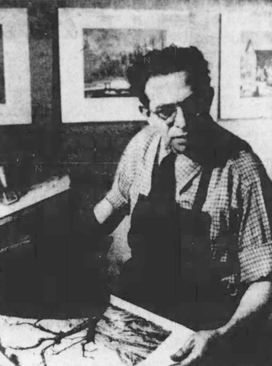
Harry Shokler (1896–1978) was a 20th-century American artist known for his oil paintings and screen prints. Using a realist approach that produced what one critic called an "exactness of rendition", he made colorful landscapes, cityscapes, and marine scenes as well as some notable portraits. He helped pioneer silkscreen printmaking in the 1930s and wrote an influential guide explaining and demonstrating the method. He gave few solo or small group exhibitions in commercial galleries and showed his work mainly from his own studio and in non-profit venues.

















